

How to drive product adoption? Get 10+ tactics from our foolproof playbook
How to drive product adoption? Get 10+ tactics from our foolproof playbook
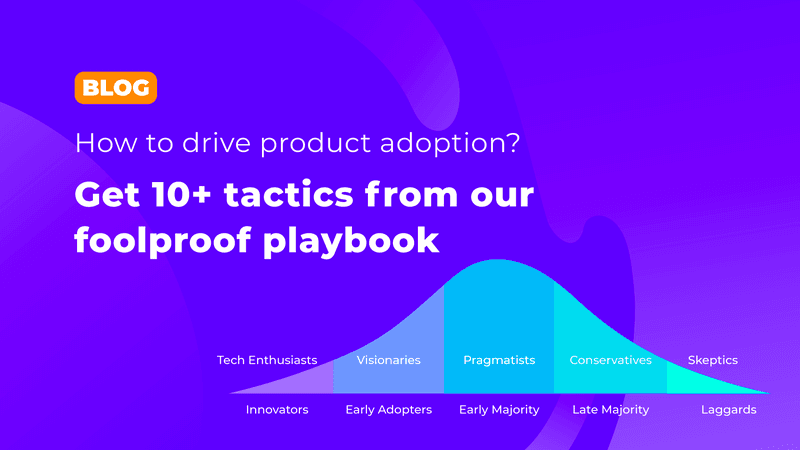
This guide provides a comprehensive playbook for SaaS companies looking to improve how users discover and embrace their products.
What is product adoption and why is it important? Product adoption is the process of users discovering and then fully embracing your product. Great software products can accelerate this through an even better user experience. In fact, it’s why 75% of SaaS companies offer a free trial. So what are the steps & stages to go through? Fortunately for you, we gathered everything you need to drive product adoption in 1 guide! Read on to find out the best-gamified user engagement strategies & real-life case studies
- What is product adoption?
- Why Saas needs to drive product adoption
- What is the product adoption curve?
- 6 stages of every product adoption journey
- What drives product adoption? 4 of the biggest factors
- How do you measure product adoption?
- How to drive product adoption like a pro
- Here's how a gamified UX fueled product adoption for Kayzr
- Build your own gamified user journey with StriveCloud
- FAQ
What is product adoption?
Product adoption is a metric to describe how engaged users are with your product. It describes the lifecycle, depth & breadth of usage according to a set of desired actions. Therefore, product adoption is intertwined with user engagement. In other words, to drive product adoption, you need to move your user from unaware to product fan!
Why Saas needs to drive product adoption
Today 68.8% of SaaS businesses run on a subscription model, the most common monetization method. However, this adds pressure on you to create user value. Indeed, when customers receive a regular bill, you need to justify that spending with your value!
In short, the important thing to remember for SaaS is to drive product adoption to a level that the customer’s expense is outweighed by the value you provide.
What is the product adoption curve?
The product adoption curve identifies user segments based on their place in the market. Ask yourself, who is your product for? If you’re selling a niche software in a new or emerging market, then your audience is likely tech enthusiasts, not pragmatists.
Knowing this also makes it easier to define your marketing and product adoption strategies. Additionally, the product adoption curve visualizes a framework for your future growth!
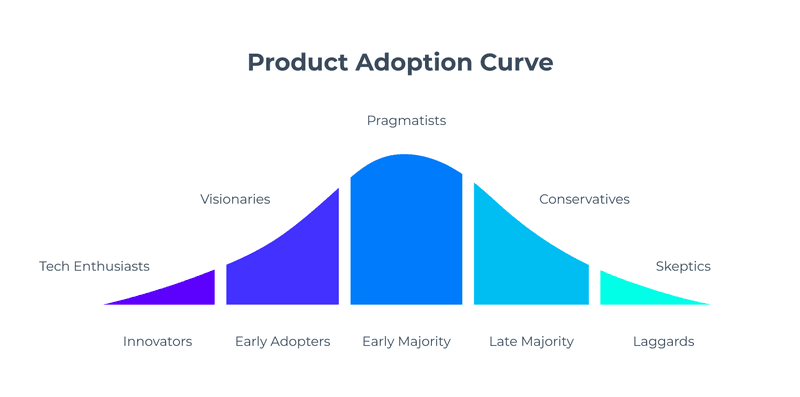
This product adoption curve visualizes the five key user segments based on their willingness to try new technology, from innovators to laggards.
6 stages of every product adoption journey
All customers undergo a 6 step journey before purchase. If you’re aiming to drive product adoption - as you should be! - you must adjust your strategy accordingly to fit this customer journey:
#1 Awareness. Users need to find you somewhere!
#2 Interest. Create that AHA moment and let users realize what your value is.
#3 Evaluation. Here, it’s common that users are still skeptical. Persuade them with strong use cases, social proof, and feature highlights that emphasize their benefits.
#4 Trial. The user decides to sample your product and see if it fits their needs.
#5 Activation. While using your software, the user experiences product value for themselves.
#6 Adoption. Once users are convinced of your platform, they’re ready to subscribe!
How to increase product adoption? Start with our ultimate SaaS growth guide for User Activation!
What drives product adoption? 4 of the biggest factors
Before users even go looking for a new product, they need a trigger. For instance, this could be that their current platform just isn’t working. This is called a push factor. Conversely, a pull factor is something attracting users to change. And that’s where your strategy to drive product adoption truly comes in!
You can create and leverage pull factors that get users aware and interested in your SaaS product. To succeed, there are 4 crucial factors that impact your pull force:
- Ease of use. A user experience that is more intuitive will beat out the competition by reducing friction and shortening the time to value. Things such as gamified onboarding can help by giving users a clear and easy to strive for purpose.
- Product visibility. Needless to say, how can you pull users in if they can’t find you? Up your SEO and find the right channels or directories to promote your product you’ll pull more people in.
- Pricing. Price will always be a sensitive topic, but settling at a perceived ‘fair’ price is critical to success. Indeed, research from McKinsey shows that an effective pricing strategy can deliver a 2-7% increase in sales!
- Product quality. Of course, before anything else, you need a good product! In effect, this means solving your user’s problems better than the competition.
How do you measure product adoption?
Your effort to drive product adoption must work on 3 axes: breadth, depth, and frequency. To clarify, breadth means that users adopt a wide range of features, whereas frequency measures app usage and stickiness. Finally, depth measures engagement and retention.
The essential product adoption metrics
To track your success, you need to know the right metrics that make sense of your data:
Time to value
How long does it take to get a user from starting a trial to the activation event? The shorter, the better!
Product qualified leads (PQLs)
As opposed to a marketing qualified lead, a PQL is a user who has experienced your value by directly interacting with your software. This metric is expressed as a simple number. For instance, you may have 1000 PQLs. Keeping an eye on this metric will highlight the users most ready for activation.
Activation rate
Activation rate = Activated users / Total registered users * 100
Because PQLs only represent the total number of activated users, the metric doesn’t take user churn into account! To discover if you’re activating efficiently, track the activation rate. Basically, it calculates how many new users reach your chosen activation event.
Feature adoption rate
Feature adoption rate = Feature monthly active users / Total monthly logins * 100
Your user engagement needs breadth - that is to say that users are engaging with multiple features. Certainly, a high rate of feature adoption is a good indicator that users are getting value from your product. On the other hand, paying for unused features lowers the perceived customer value!
Customer lifetime value (CLV)
CLV = (Annual user revenue * Duration of user relationship in years) – Total costs of acquiring and serving the customer
This one is simple but important! The more users that adopt, the fewer churn. And that means getting more bang for your buck from each customer. As an added bonus, this also means reduced customer acquisition costs.
Customer engagement score (CES)
CES = Total event value #1 + Total event value #2 + total event value #3...
This is a more complex metric that relies on a host of different user data, ranging from weekly logins and session frequency to the referral of other users.
To calculate the value of these events, first, identify which activities have the biggest impact on user engagement and retention. Once you identify the key moments, ascribe each a score between 1 and 10 depending on how important they are.
Following that, add your scores and view them on a scale of 100. The higher the score, the better your user engagement! Ideally, highly engaged users sit in the 70-100 range. On the contrary, disengaged users languish below 40, a sign of potential churn!
Learn to manage churn with Retention Analysis
There is a way to predict and manage churn, instead of just falling prey to it! The answer is Retention Analysis. When you analyze your churn as comprehensively as this, you will notice trends in product/feature satisfaction. For example, does a certain segment have a higher churn rate than other groups?
In detail, Retention Analysis segments users based on demographic data and dates of acquisition. This can then be applied to steps in the customer journey, especially user onboarding where the need to drive product adoption is acutely important.
As a result, Retention Analysis delivers insights on what is impacting user engagement, including the reasons why users decide to adopt your product - or why they don’t.

This graph illustrates how retention analysis can track user cohorts over time, identifying drop-off points in the onboarding process.
How to drive product adoption like a pro
Now for the bit, you’ve been waiting for - how do you drive product adoption like a pro? When you look at the top SaaS companies on the market, you’ll see them utilize a whole range of tactics from gamified checklists to re-engagement campaigns.
Here are some of the best lessons you can learn from SaaS market leaders:
Learn to identify the segment of your top customers
SaaS products with high user engagement and profitability know who their most valuable customers are, and you should too. This is when Retention Analysis and Cohort Analysis become especially useful. Top product managers double-down on the channels and campaigns proven to achieve conversion!
Make user engagement and retargeting campaigns a major priority
Retargeted users are an untapped goldmine for your business. If you want to drive product adoption, they are invaluable. Retargeting typically involves campaigns, offers for lapsed users, and upselling to existing users.
Research shows the advantages of these tactics:
- Retargeted users spend 37% more often than new users
- Their retention is consistently 5% higher than organic acquisitions
- And by Day 30, retargeted users have a 152% higher user engagement rate!
Top tips on improving your onboarding experience
Develop a frictionless signup flow with Retention Analysis
With Retention Analysis, you can discover the exact steps where your users are churning. In general, sudden peaks in churn indicate a point of friction or frustration. To solve this, optimize drop-off events by testing tweaks that streamline the customer journey.
A gamified user experience boosts user motivation to drive product adoption
Gamified onboarding takes full advantage of the power of psychology. These psychological triggers are powerful and pervasive, as they are common to all of us! For a great example, check out how Databox adds 3 levels to its gamified onboarding:
#1 Gamified checklists
Checklists with incomplete items are a clear winning condition for the ‘game’. It is also an example of the powerful ‘Zeigarnik effect’. This psychological phenomenon says that incomplete tasks are more memorable than completed ones!
#2 Progress bars
Progress bars fill as the user advances, which creates the ‘endowed progress effect’. This says that users are more likely to complete tasks they begin.
#3 Tiered levels
A tiered leveling system rewards user engagement and gives them a higher social status. This idea is actually called the ‘lucky loyalty effect’, where engaged customers feel more entitled to prizes and gifts than customers who are not as engaged or as loyal.

Databox's onboarding process effectively uses gamification elements like checklists and progress bars to guide new users toward activation.
Learn how a gamified user experience can drive product adoption! Learn how to use behavioral psychology to your advantage in our expert-led workshop!
The key to providing better product support
Balance forums and FAQs with live chat tools
Not every issue needs a support agent to solve it. Give users self-service resources such as FAQs, help sections, and user forums that let users find their answers fast and independently. Failing that, ensure that you offer real-time human support! In this regard, live chats have the highest customer satisfaction rate of an impressive 82%.
Track the behaviors that indicate churn and prioritize support for those users
To be the most efficient and effective business you can be, learn which behaviors precede churn. For example, low session duration could hint at dissatisfaction. In short, discover which users are flagging, and prioritize them to optimize your product adoption rates!
How to use data to improve your product
Data can be overwhelming to process. To make sense of it all, follow these 4 steps:
- Analyze data using the key metrics, highlighting areas that need improvement
- Develop a hypothesis for how to drive product adoption
- Tweak or update the product accordingly, for example with A/B testing
- Validate your results! A Retention Analysis comparison is helpful here
Top tools from your stack made to drive product adoption
Improving product adoption rates requires a holistic approach - and that means you need a handy stack of tools! Don’t be caught without these great products:
StriveCloud
Gamification is one of the most versatile and powerful tools looking to create an engaging user experience. Our modular gamification software is easy and flexible to use - simply connect it to your SaaS and customize it to your needs!
We solve the user motivation challenge with a sticky reward system & tons of gamified features to keep users engaged. Build your own gamified user journey from activation to product adoption, with ease!
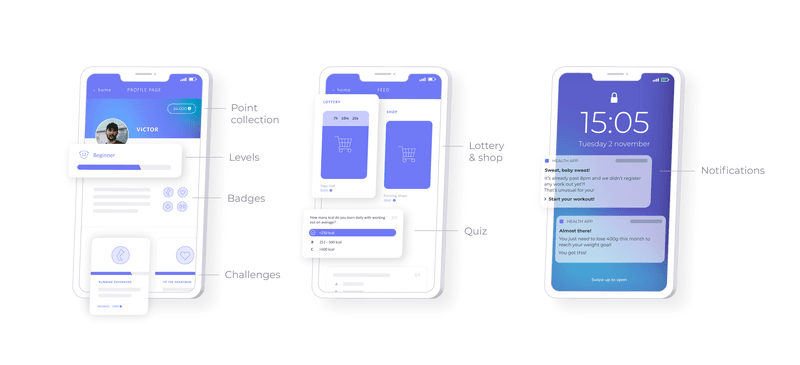
The StriveCloud user interface provides modular building blocks for creating a customized and gamified user journey to increase engagement.
How to build a gamified UX in no time? Build, measure & learn with our modular gamification building blocks!
WalkMe
Identify the gaps in your customer journey with WalkMe. Their software analyzes real-time user journeys in a clean user interface, allowing you to understand your users better and make data-driven decisions. For example, you can gain insights into any friction preventing new users from long-term product adoption.
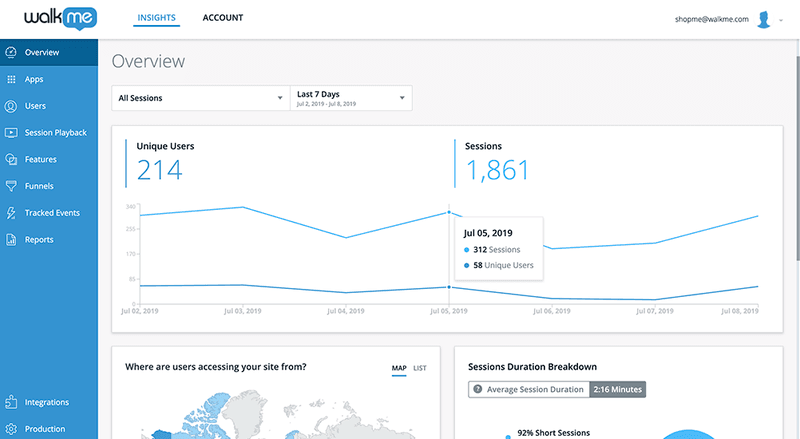
WalkMe's analytics dashboard helps teams visualize the user journey and identify points of friction that might be hindering product adoption.
Social Intents
Remember that live chats are incredibly successful? You can create that success with Social Intents. As a live chat tool, this software improves the responsiveness of your customer service by facilitating easier and faster discussion. Not to mention, their live chat lets you share those all-important FAQs for when an agent isn’t really needed.
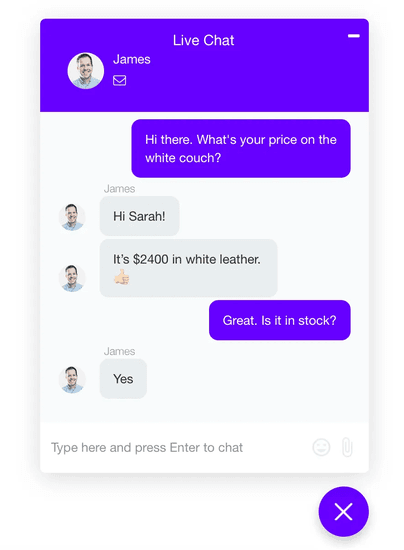
This example shows how a live chat widget, like the one from Social Intents, can be integrated to provide immediate customer support and improve user satisfaction.
Here’s how a gamified UX fueled Kayzr’s product adoption rates
The whole SaaS industry wants to drive product adoption. This was the case for gaming community platform Kazyr when they came to StriveCloud looking to supercharge user engagement & retention, without massively increasing the costs to scale. The answer? A platform powered by gamification that rewards and empowers users!
The results were incredible:
📈 350% more users since StriveCloud’s involvement
💪 60% more daily active users
👉 1 year of 24/7 eyeball time in a day
🕒 1.5h average session time per user per day
So how was this success achieved? Firstly, we implemented a tournament system independent of Kazyr moderators. This meant that competitions could run 24/7, opening up the platform for longer and deeper user engagement!
Additionally, we decided to cap prize rewards and introduce an intrinsic rewards system that sparks gamers’ motivation. That means badges, achievements, and points instead of extrinsic rewards such as cash prizes. In fact, research shows that intrinsic motivators are preferred for some important reasons:
- Intrinsic rewards are self-determined
- They don’t rely on reinforcement/environmental factors
- Self-motivation means stronger and longer-lasting engagement!
Build your own gamified user journey with StriveCloud
Kayzr selected StriveCloud because we offer a uniquely sticky and scalable reward system. As your reliable business partner, we always endeavor to drive product adoption in a sustainable and efficient way. More than that, in a way that is completely customized to your needs.
Our modular gamification software achieves success on behalf of our clients:
👉 58% increase in Daily Active Users on average across all our customers
👉 23% decrease in churn rates (making business more efficient!)
To start your journey today, get in touch with our expert team. There’s no better time than now to optimize your platform and make it the best it can be!
FAQ
What is product adoption?
Product adoption is a metric to describe how engaged users are with your product. It describes the lifecycle, depth & breadth of usage according to a set of desired actions. Therefore, product adoption is intertwined with user engagement. In other words, to drive product adoption, you need to move your user from unaware to product fan!
Why SaaS needs to drive product adoption
Today 68.8% of SaaS businesses run on a subscription model, the most common monetization method. However, this adds pressure on you to create user value. In other words, when customers receive a regular bill, you need to justify that spending with your value!
What is the product adoption curve?
The product adoption curve identifies user segments based on their place in the market. Ask yourself, who is your product for? If you’re selling a niche software in a new or emerging market, then your audience are likely tech enthusiasts, not pragmatists.
How do you measure product adoption?
Your effort to drive product adoption must work on 3 axes: breadth, depth, and frequency. To clarify, breadth means that users adopt a wide range of features, whereas the frequency scale measures app usage and stickiness. Finally, depth measures engagement and retention.
Related Posts
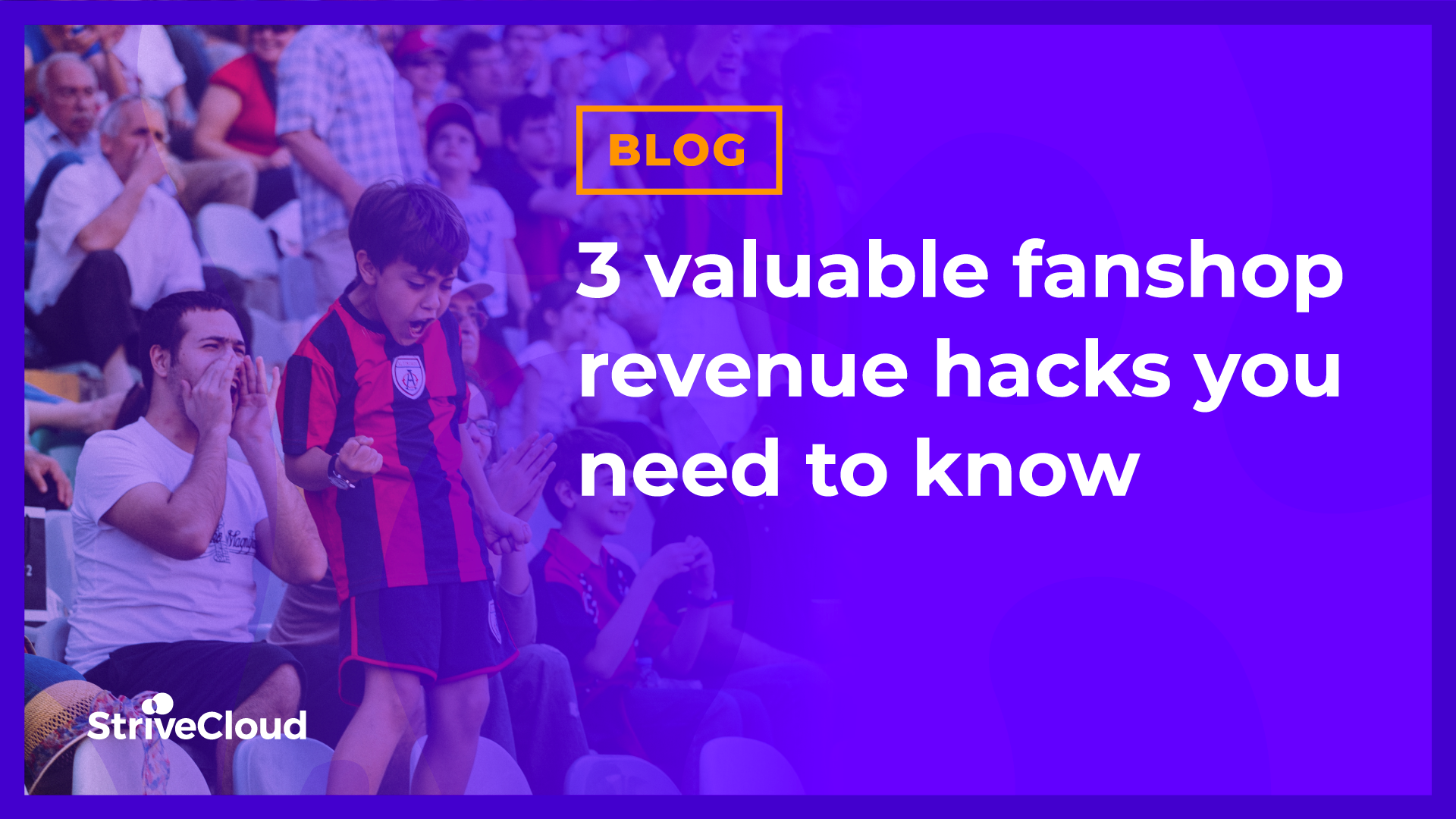
3 fanshop revenue hacks
With sports clubs losing matchday income, new revenue streams like fanshops are getting more important. With the industry losing an estimated $60 billion from stadium revenue, the focus on merchandise and online sales have become a higher priority. In this article, we’ll show you how gamification drives merchandise sales and creates long-term loyal customers.
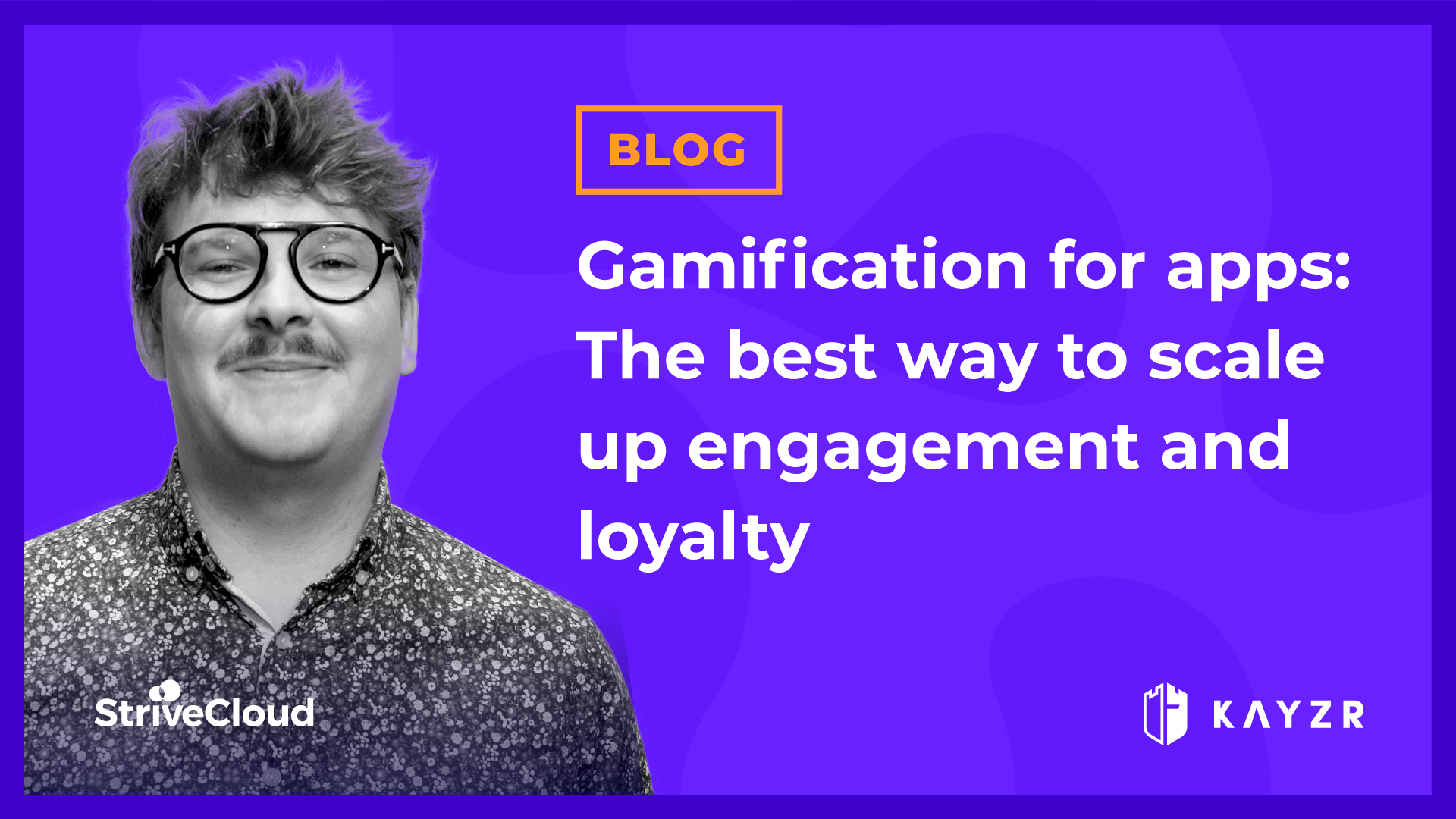
Gamification for apps | Scaling engagement & loyalty
Growing your user base is hard. And it’s even more so to keep those users engaged and active without spending tons on loyalty costs. Unfortunately, in today’s world, where digital apps or platforms often require high initial investment it’s not an option to lose fans. So how can you grow a user base while cutting costs on retention and loyalty? The answer seems to be gamification! It leverages data & rewards to trigger emotional drives so that a user gets and stays motivated to carry out an activity. Esports platform Kayzr for instance successfully gamified its platform, growing its user base by 350% and gaining 60% more daily active users.

